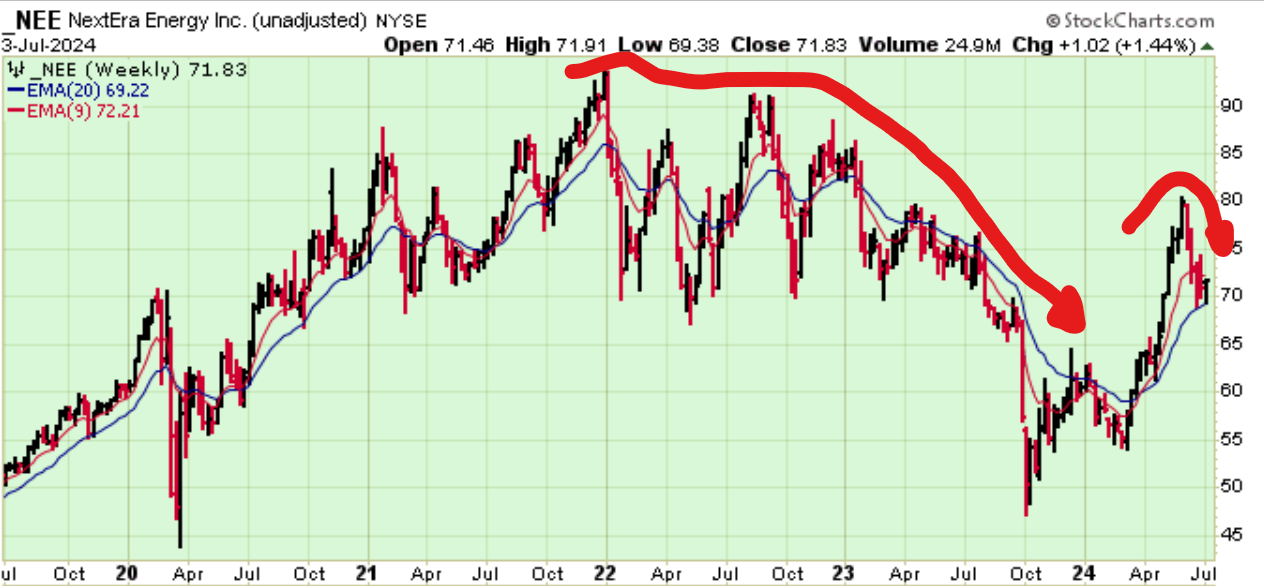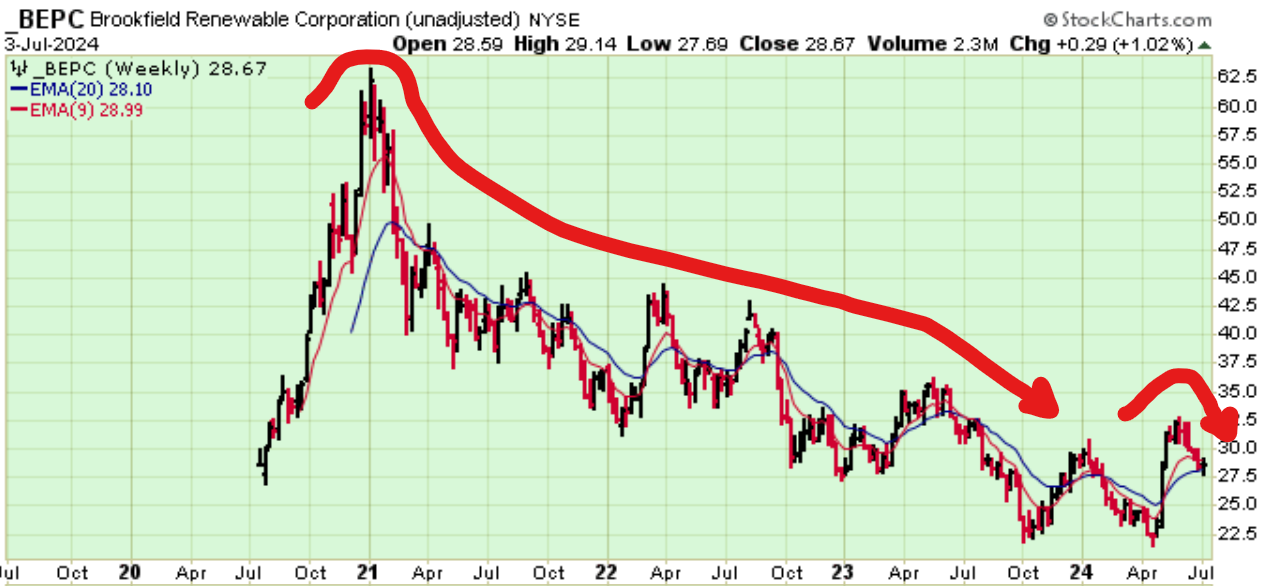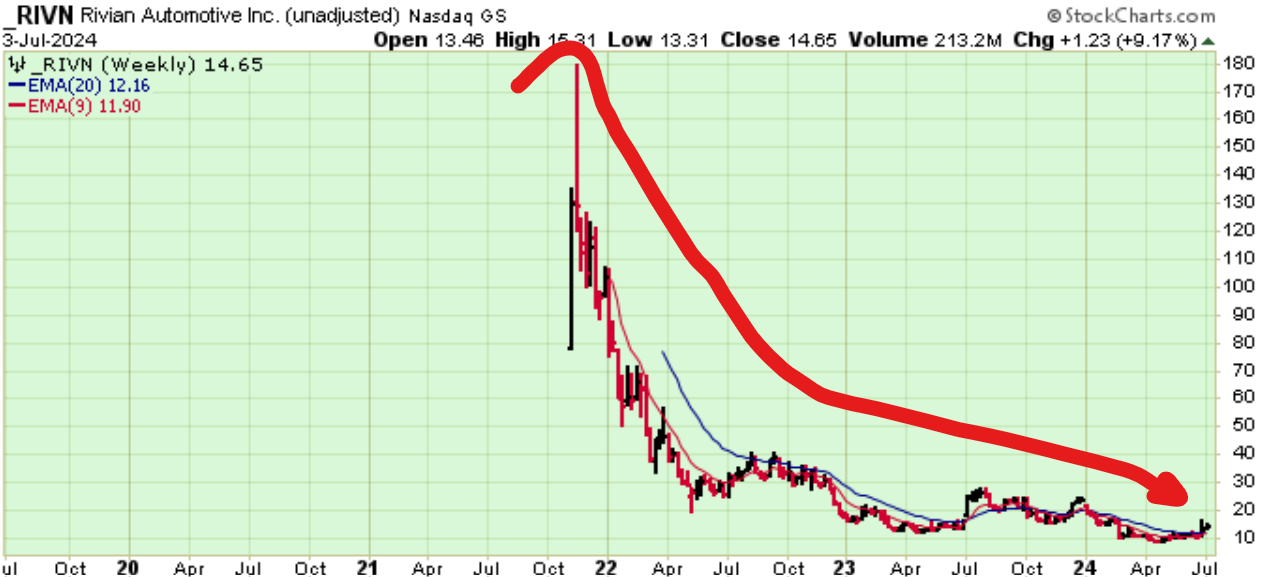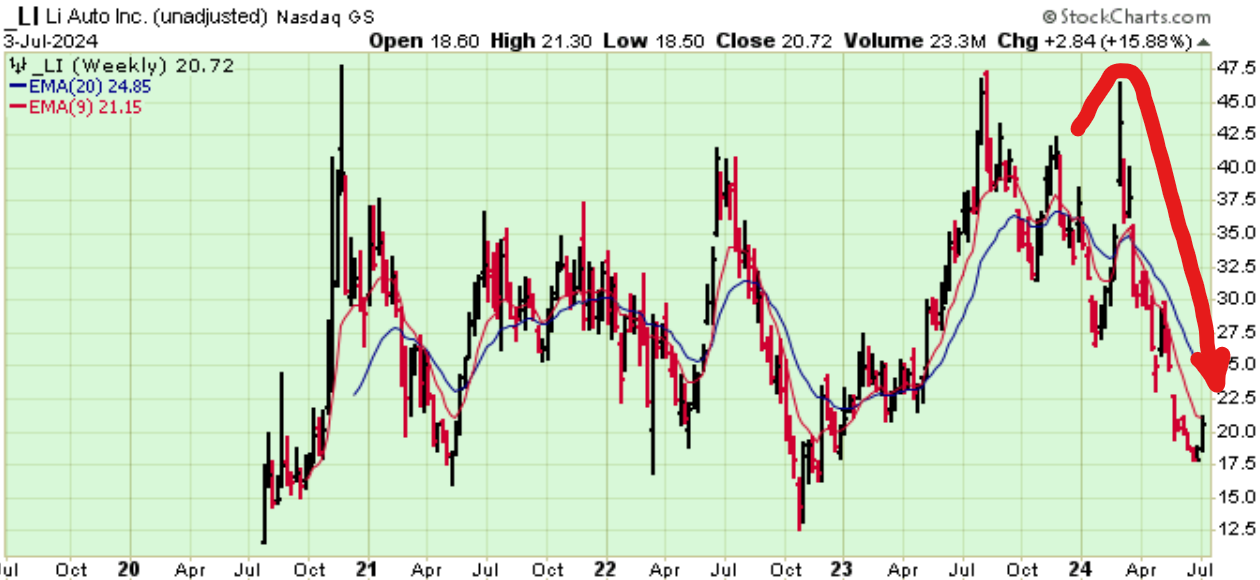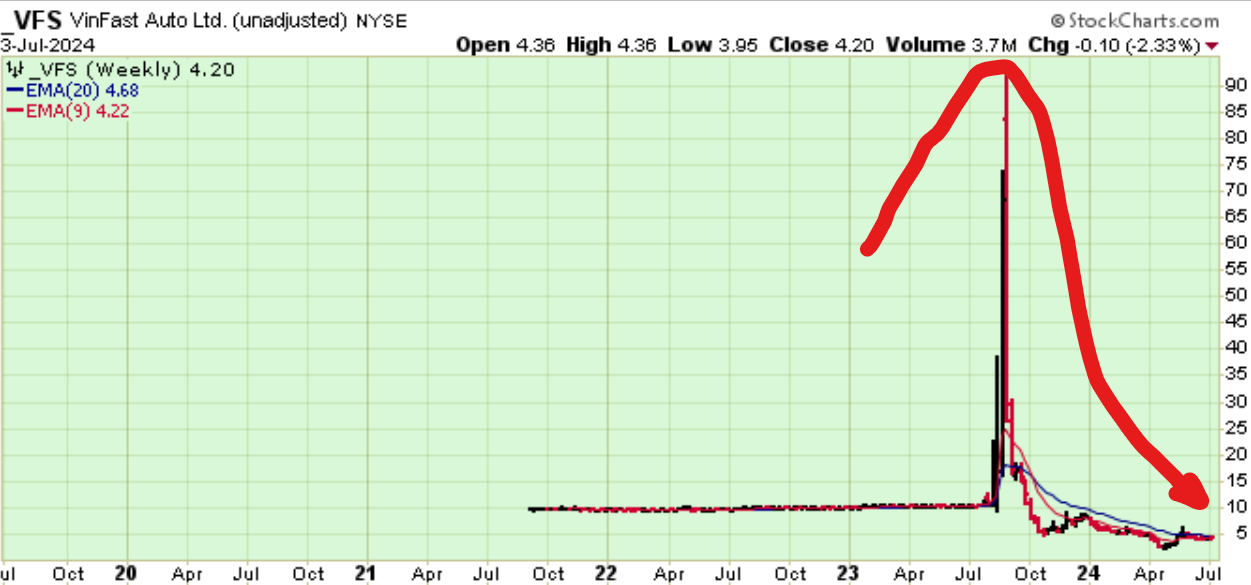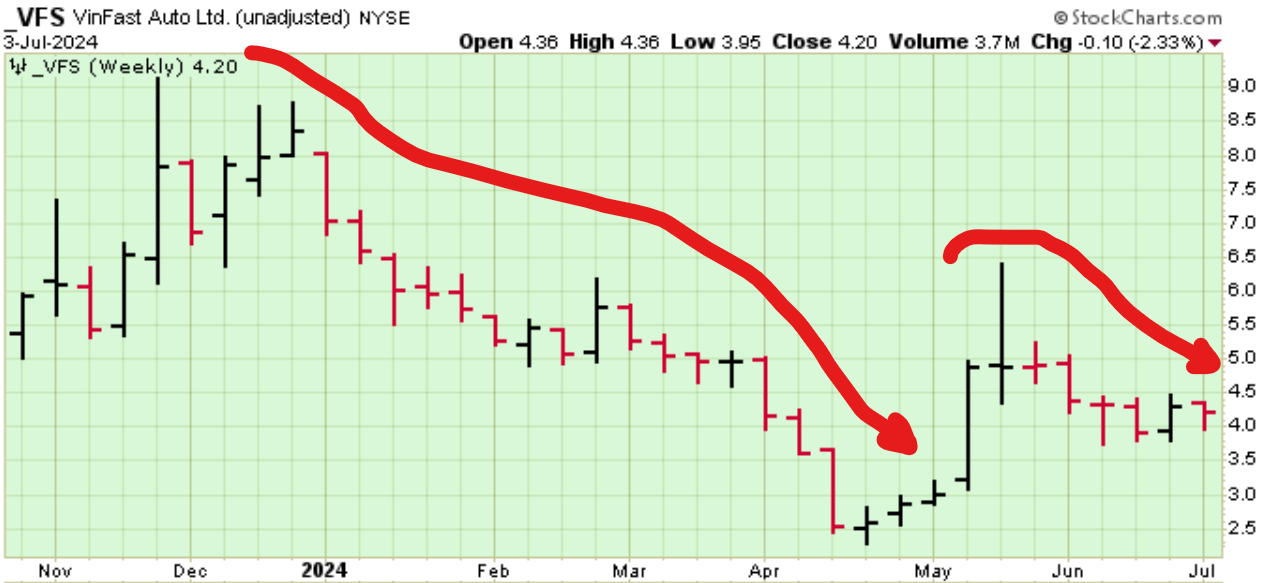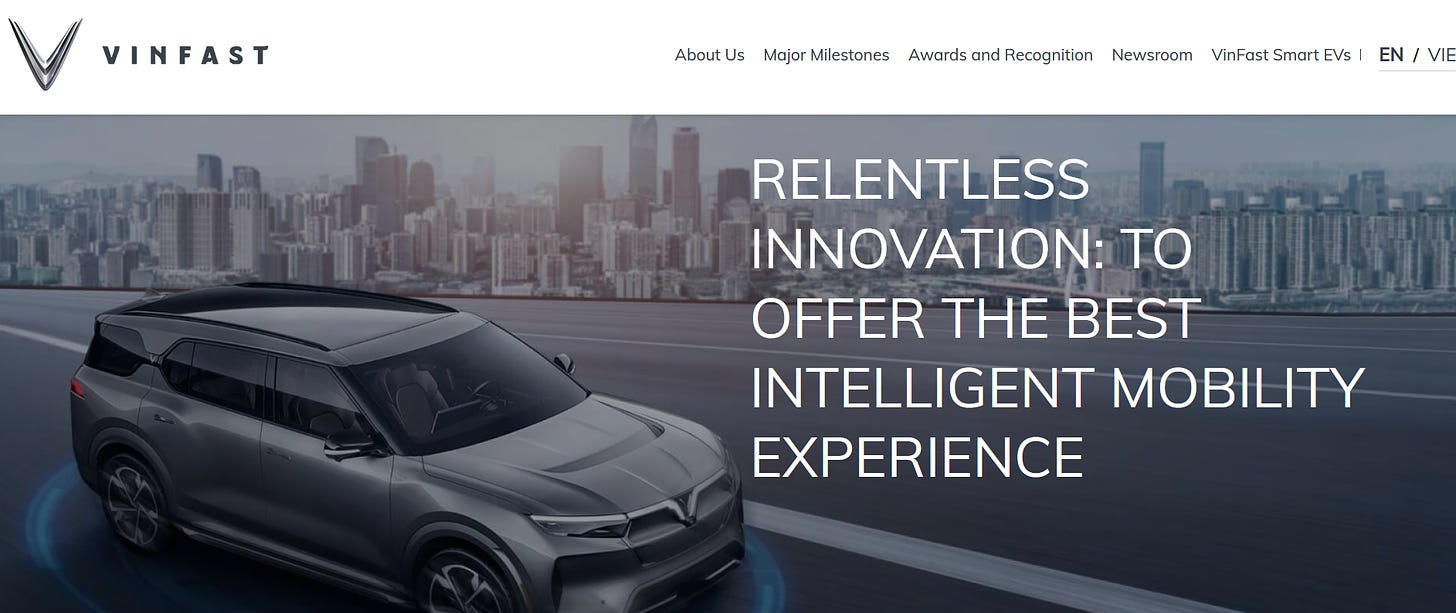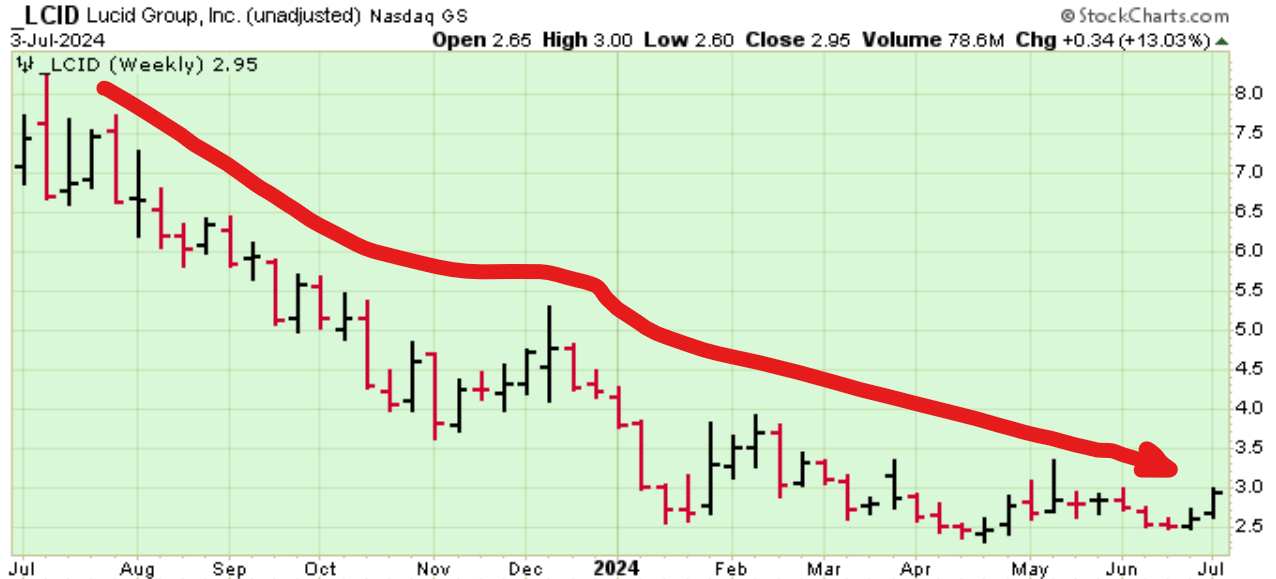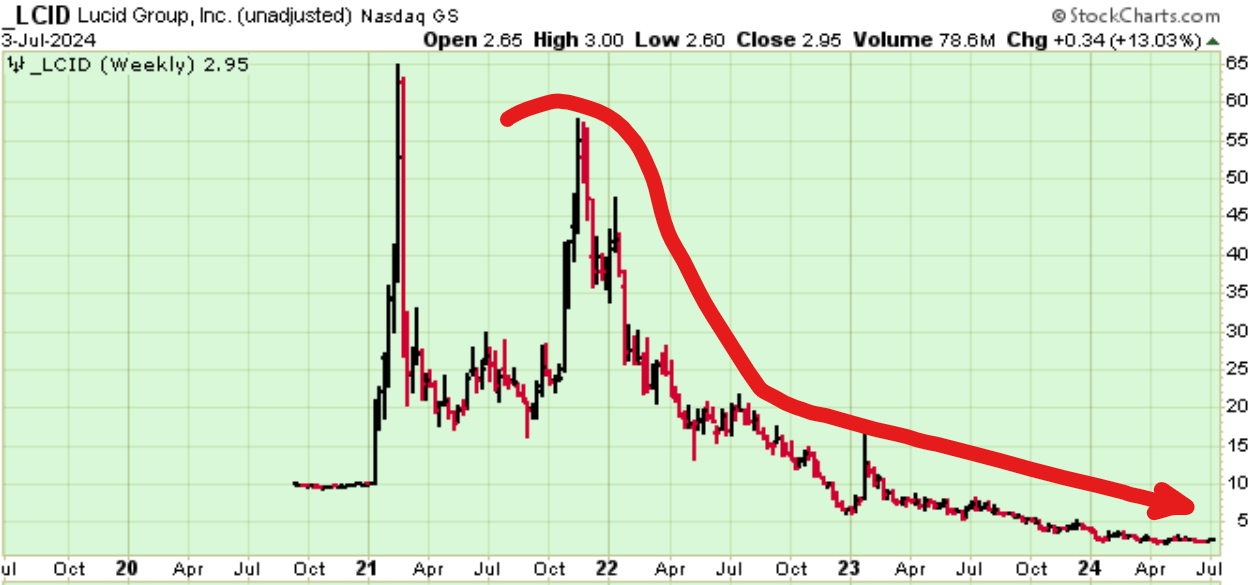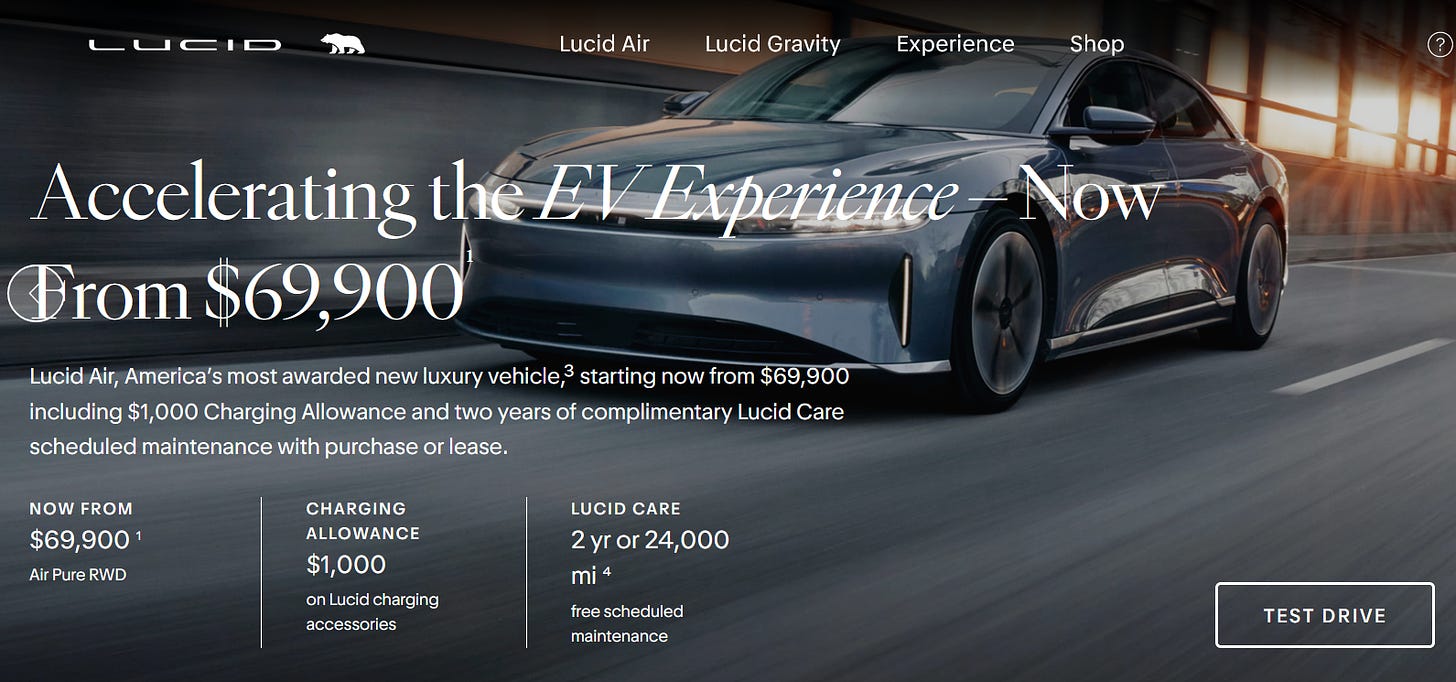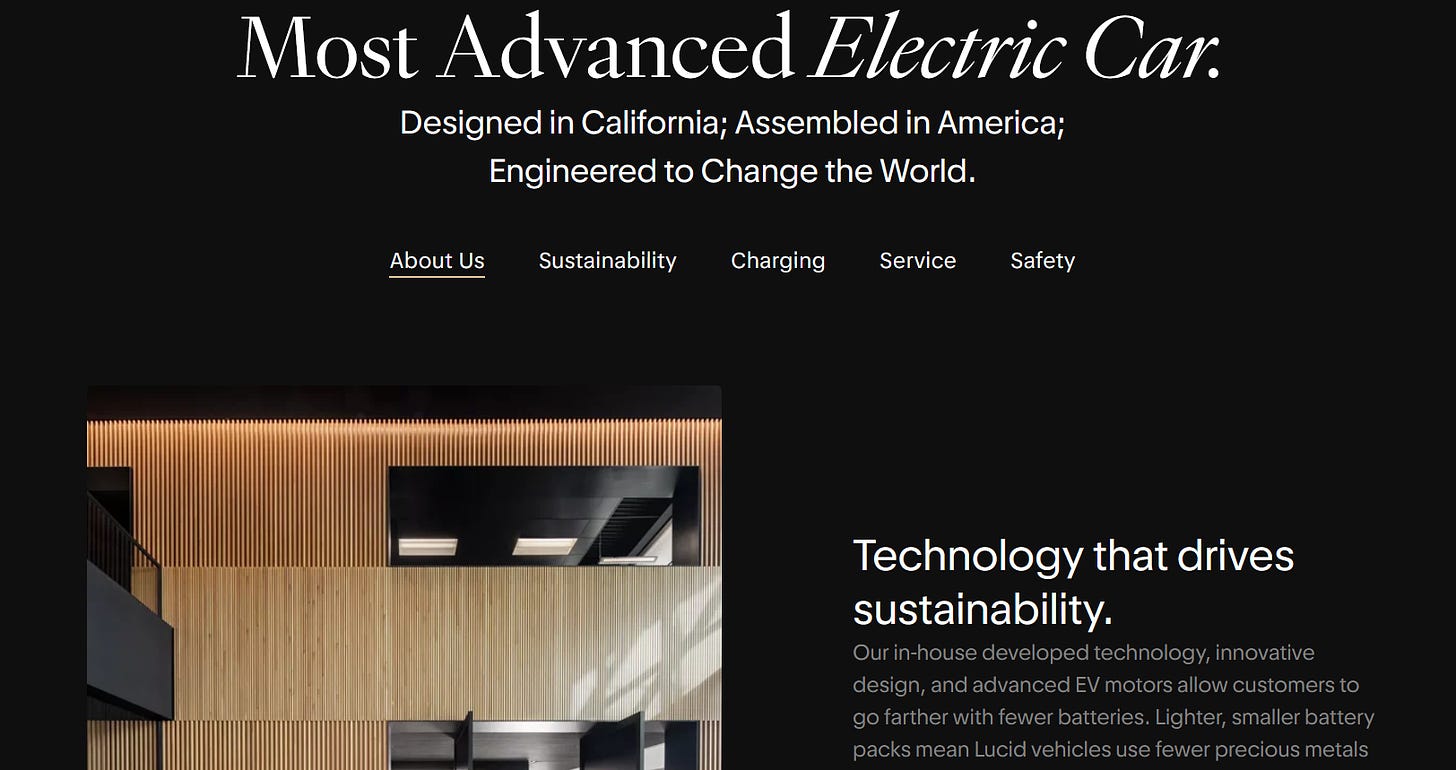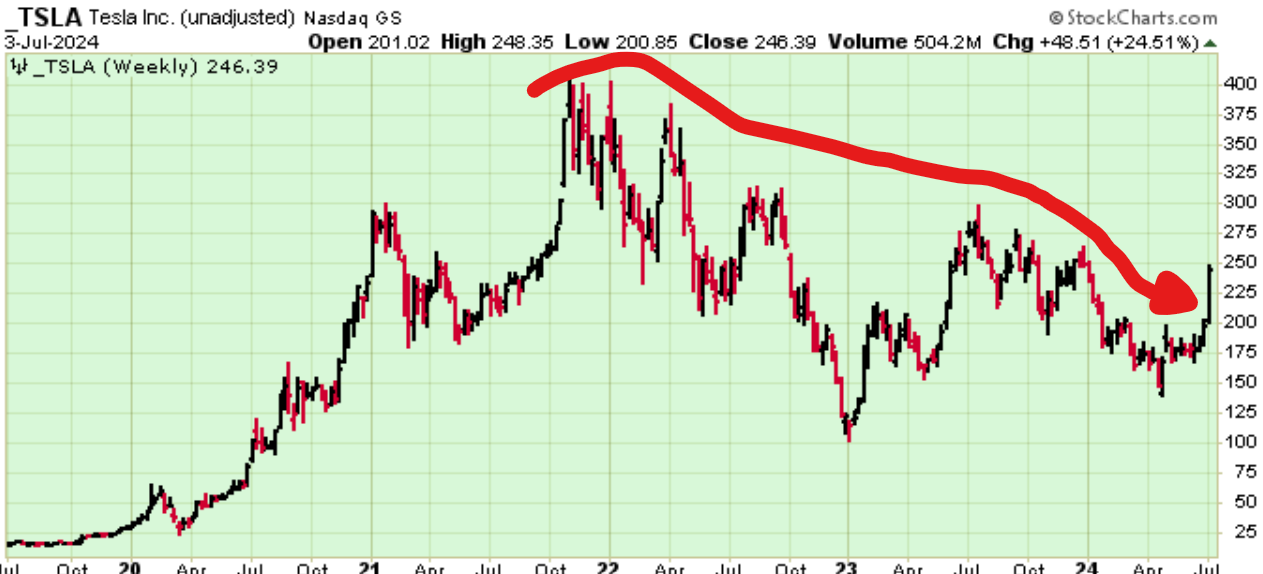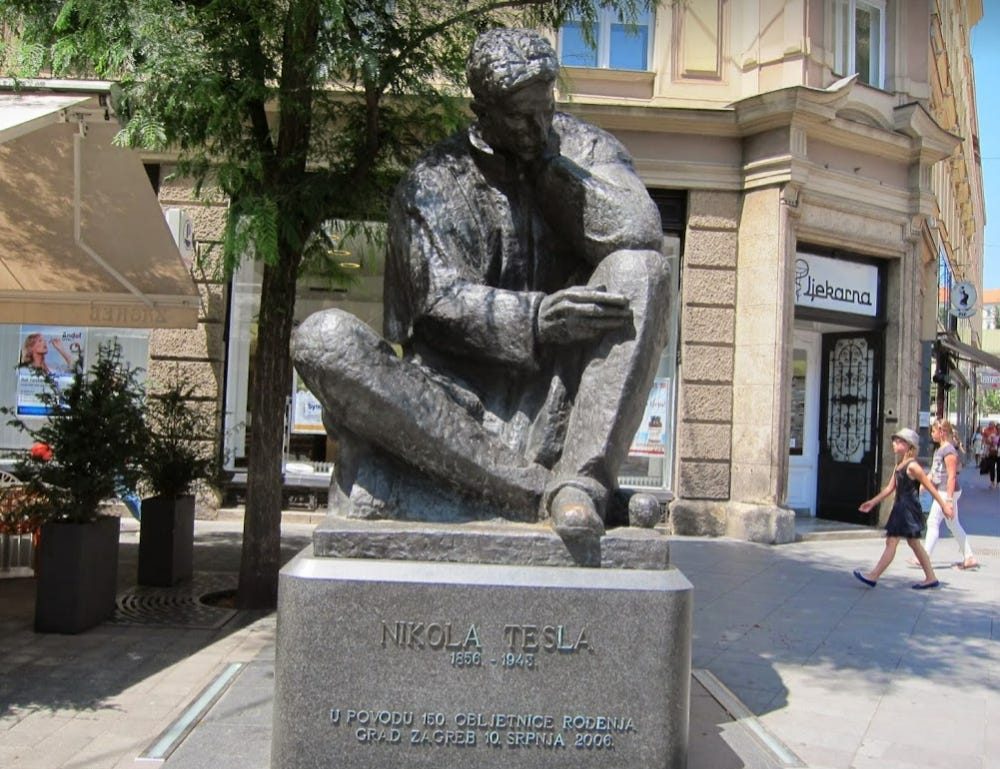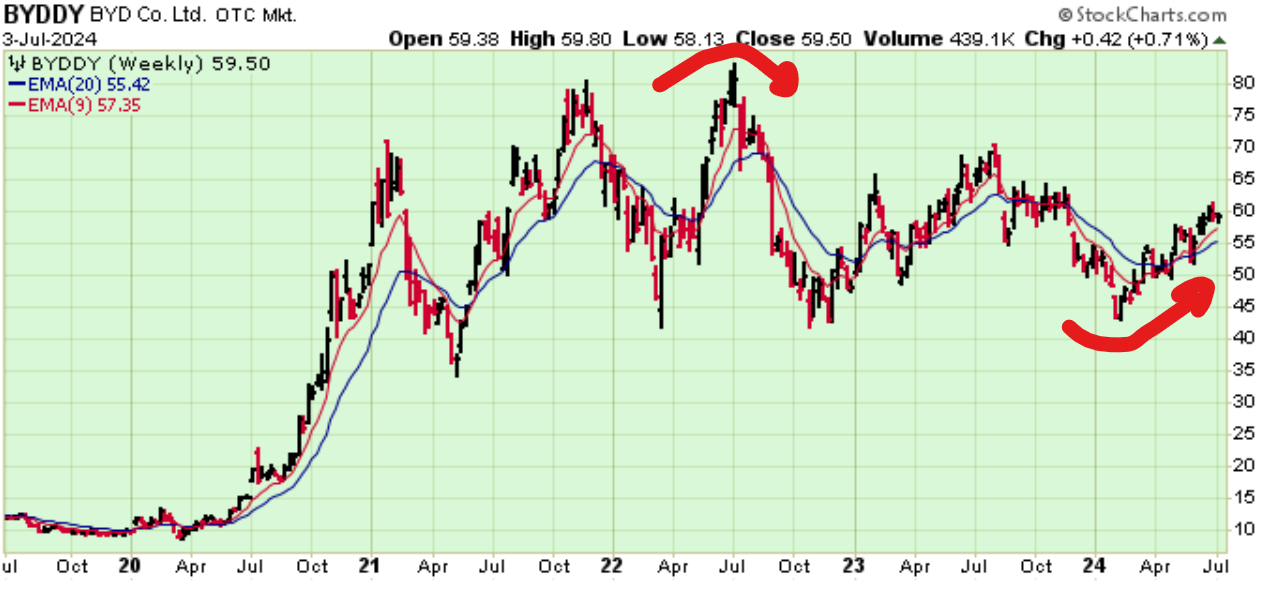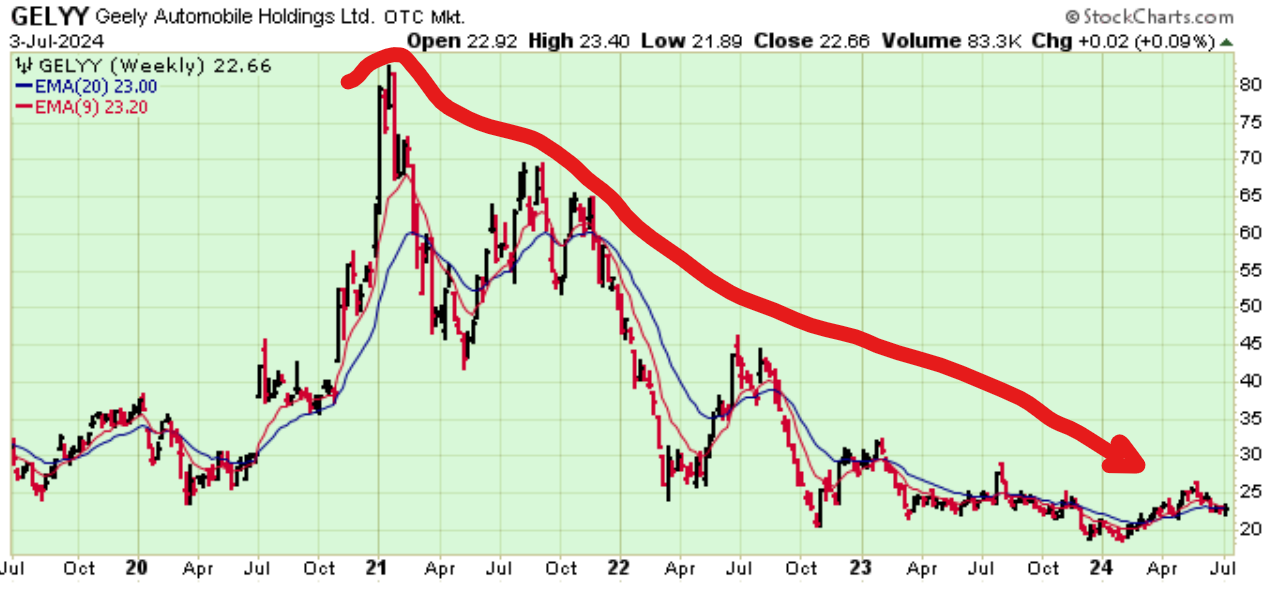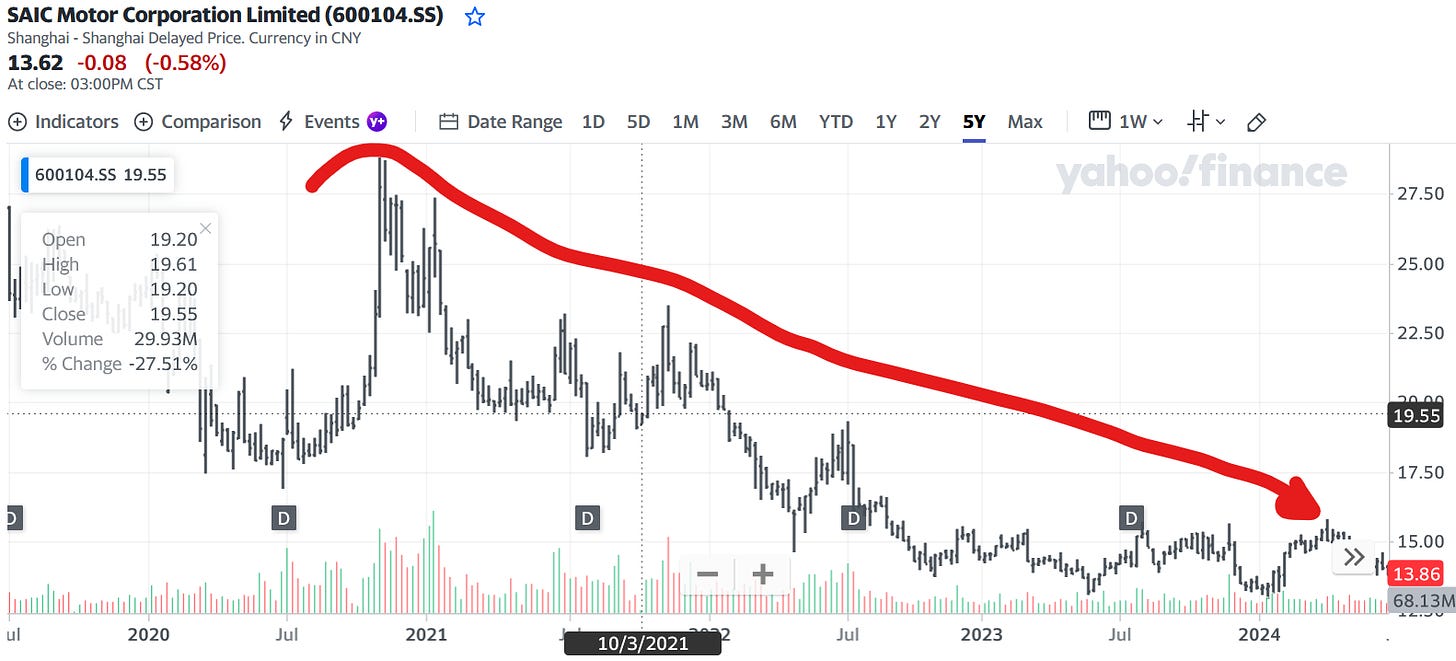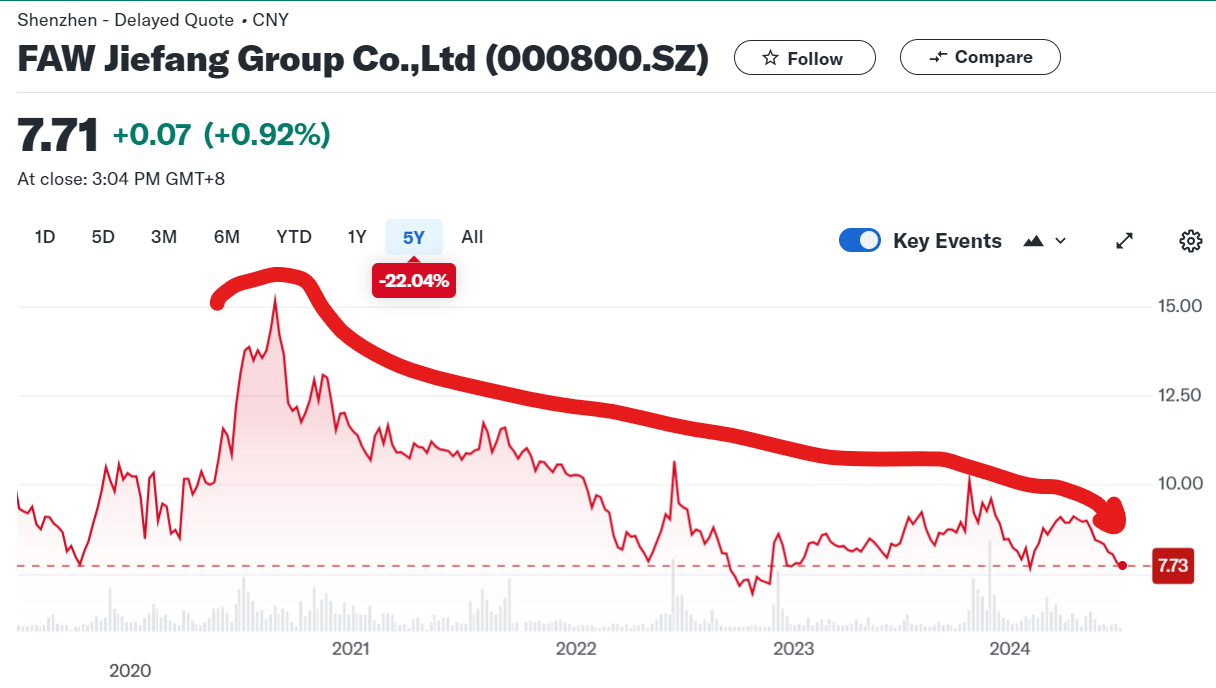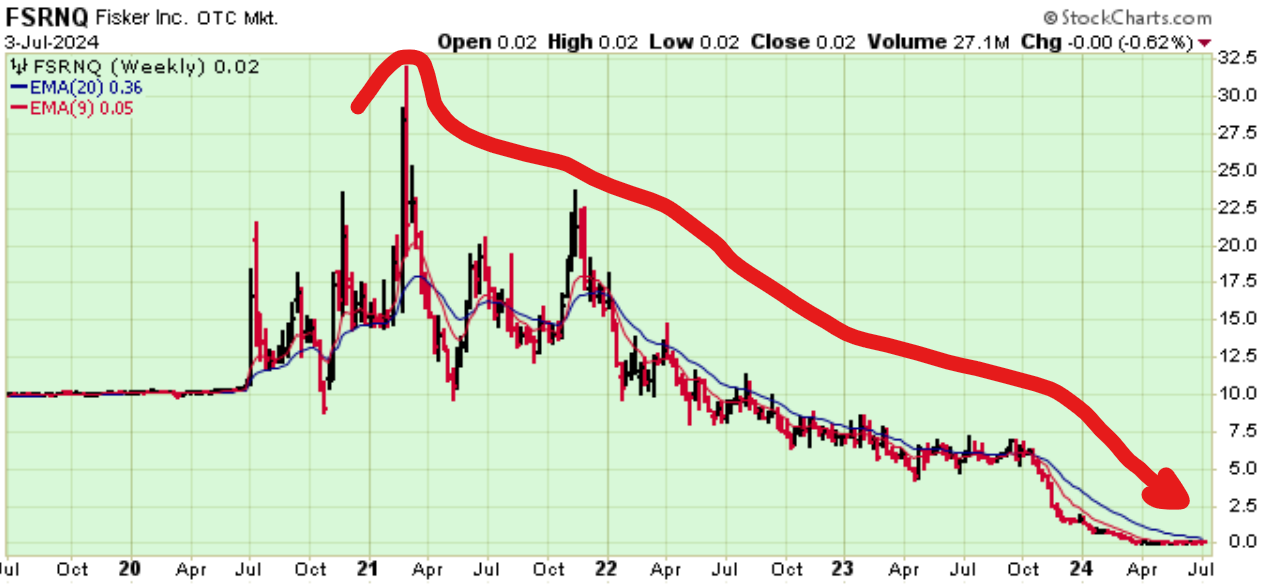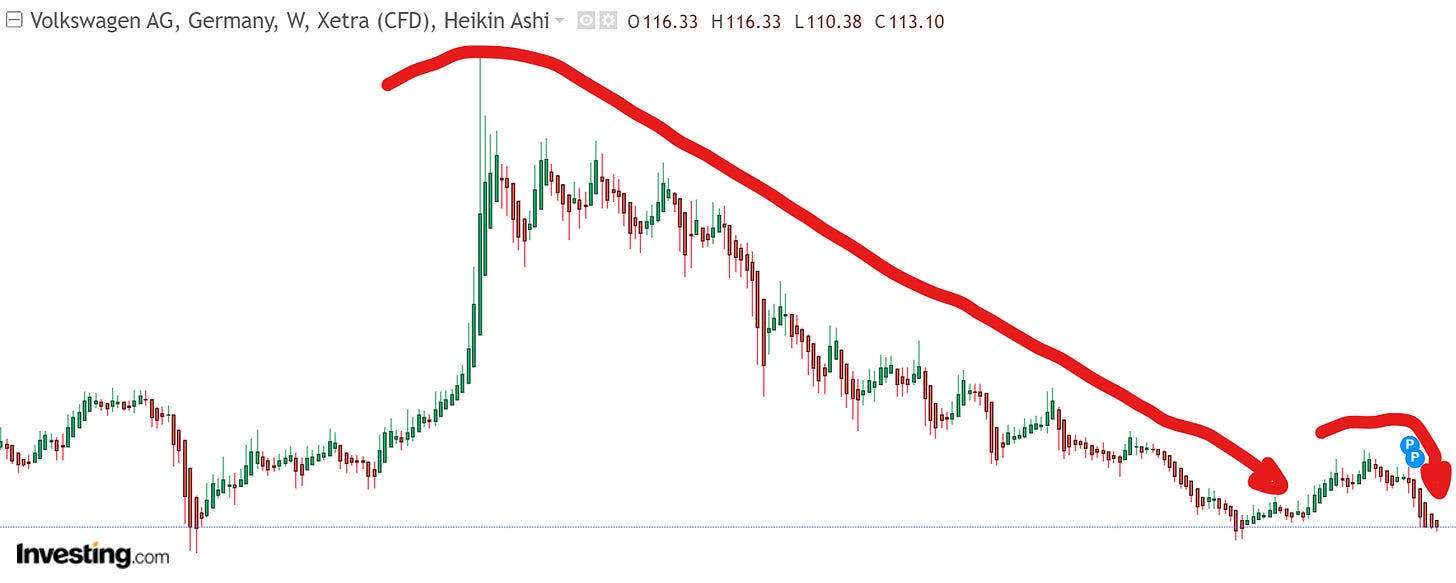BOOM Finance and Economics 7th July 2024 -- a Global Review
WEEKLY -- On Sunday -- All previous Editorials are available on the Substack Archive and (for very long term archive) Visit LinkedIn and/or Wordpress https://boomfinanceandeconomics.wordpress.com/
CRITICAL MINERALS SUPPLY CANNOT EXPAND ENOUGH TO REACH NET ZERO — FINANCE IS THE LIMITING FACTOR — THE DREAM IS OVER
INVESTORS CONTINUE TO ABANDON RENEWABLE ENERGY COMPANIES
INVESTORS CONTINUE TO ABANDON ELECTRIC CAR COMPANIES
TESLA MOTORS — WILL THEY BE THE EXCEPTION?
IS BYD ANOTHER POSSIBLE SURVIVOR?
ELECTRIC VEHICLE SALES ARE FALLING IN GERMANY, AUSTRALIA – ANOTHER EV COMPANY BANKRUPTCY IN UNITED STATES
CRITICAL MINERALS SUPPLY CANNOT EXPAND ENOUGH TO REACH NET ZERO
FINANCE IS THE LIMITING FACTOR FOR RENEWABLES AND ELECTRIC CARS
Last Monday, an article was released by OPEC written by the Secretary General, Haitham Al Ghais. Admittedly, some may say that he is inherently and naturally biased towards hydrocarbon fuels. However, his article is worthy of deep reflection because there is a lesson to be learned that he does not know about and (probably) does not understand.
That lesson concerns the question of energy finance. Yes, dear readers, energy supply has to be financed.
The article was titled “Critical minerals: a realistic assessment”.
The critical minerals referred to included copper, cobalt, silicon, nickel, lithium, graphite and rare earths. Why? Because these minerals and the metals created from them underpin the development of renewable energy infrastructure and the mass manufacture of Electric Vehicles (EV’s).
The author referred to a statement from The International Energy Agency (IEA) which says that in its Net Zero Emissions by 2050 Scenario, demand (and supply) for these critical minerals will have to quadruple in size by 2040. That is just 15 short years away and such an increase in the supply of minerals and metals has never occurred in history.
Now, sceptics may say that the IEA is also strongly biased in favour of hydrocarbon energy sources and, possibly opposed to alternative, “renewable” sources. But that criticism does not deal with these extraordinary claims which are clearly impossible to achieve.
They beg the question – Can it be done?
And another question – Should it be done?
But, most importantly — How can it be financed?
The IEA assessment expects copper demand to rise by 50%, rare earths demand to almost double, cobalt demand to double and nickel demand to increase 300%. Graphite demand is expected to quadruple and Lithium will have to grow by almost 9 fold by 2040.
This will require the construction of a huge number of new mines. Back in 2022, the IEA said that by 2030 alone, the world would need to build 50 new Lithium mines, 60 new Nickel mines and 17 new Cobalt mines. That is mind boggling and, quite frankly, in BOOM’s opinion, cannot be achieved logistically and cannot be financed either. It is a Pipe Dream.
For readers who are not native English speakers, a Pipe Dream is an unattainable or fanciful hope or scheme.
The assessment by the International Energy Agency (IEA) made in 2021 showed that (aside from all the steel and aluminium) an electric car contains over 200 Kilograms of minerals compared to 33 Kilograms for a conventional car. These cars do not make themselves. Massive factories with massive energy requirements are needed. Volkswagen’s largest factory in Germany for conventional vehicles has two power stations solely dedicated to production. These cars also contain glass, silicon, rubber and plastics.
Here is the breakdown of the minerals involved.
Conventional Car – Copper 22.3 Kg per car, Manganese 11.2 Kg
Electric Car – Copper 53.2 Kg, Lithium 8.9 Kg, Nickel 40 Kg, Manganese 24.5 Kg, Cobalt 13.3 Kg, Graphite 66.3 Kg
But this is not a problem just for EVs. Wind turbines, solar panels and new electricity distribution grids are also all heavily reliant on minerals and metals.
As the OPEC Report says -- “Critical mineral mining is an extremely energy intensive activity, and one that today runs on hydrocarbons. It could not function otherwise. The use of coal and gas is vital in refining the minerals through various thermal and chemical processes. For instance, blending, to aid the removal of other metals, and in heating to high temperatures to produce more pure forms. Petroleum-based products are also used for excavators, bulldozers, dump trucks on site, as well as various forms of transportation to move minerals from supply to demand centres.”
And here is the killer sentence --- “The oil industry, renewables and EVs are not separate from each other. They do not work in silos.”
BloombergNEF (BNEF) is a strategic research provider covering global commodity markets and the disruptive technologies driving the transition to a low-carbon economy. It has predicted that, to achieve Global Net Zero, will require a massive increase in the electricity grid, a distance of around 152 Million Kms -- one long enough to stretch to the Sun. That may be an exaggeration but suffice to say that the increase in infrastructure would be huge.
Al Ghais states that the world has invested over US $ 9.5 Trillion to date in “transitioning” over the past two decades, yet wind and solar still only supply just under 4% of the world’s energy, and EVs have a total global penetration rate of between 2% and 3%.
Looking ahead, BNEF, in its recent New Energy Outlook report, states that its net-zero scenario would cost US $ 250 Trillion by 2050.
BOOM asks another embarrassing question.
Where is this money going to come from? Do private investors have sufficient capacity and inclination to risk that amount of capital? BOOM says NO, the evidence is already here.
And if private investors cannot (or will not) fund this expansion, then nation states will have to do so. That will require huge increases in their Budget Deficits because taxation revenues cannot possibly provide sufficient funding. When nation states expand their budget deficits, they do it by issuing Bonds to investors in the private sector. The Pipe Dream will then become a nightmare.
If you read on, BOOM will convince you that private sector reluctance is now, already, VERY obvious in regard to investment in renewables and EV’s. So – the problem of private sector investment resistance is already here.
Nation state governments can “print money” in cash or they can pressure their central banks to do so electronically in massive QE programs (Quantitative Easing). However, that would inevitably cause a strong stimulus to increased (and increasing) CPI inflation and Asset Price inflation. In other words, it just won’t happen.
The energy “revolution” cannot be funded — that is the hard truth, the reality we all will have to face, sooner or later.
Private investors will not be found to fund it and public investment (which relies on private investors buying government bonds) cannot expand enough to do so either. Huge expansion of budget deficits via QE programs or massive cash injections will cause economic havoc as increasing price inflation becomes embedded.
Western economies with aging demographics, slowing economic growth and reluctant private investors are the problem. Perhaps the Martians will come to our rescue?
INVESTORS CONTINUE TO ABANDON RENEWABLE ENERGY COMPANIES
ALTERNATIVE ENERGY REVIEW
According to almost all politicians in the advanced, western nations, we are all headed into a bright new energy future based upon “renewables” and “electric cars”. Their intention is to “save the world” from their anticipated “annihilation” of climate change, global warming and global boiling. But, unfortunately, the road to the future may not be paved with those good intentions. In fact, it may be a very rocky road full of potholes and decay. There are some major problems with The Dreams of very ordinary men (and women) in regard to “fixing” our energy mix and reaching that magical target of “Net Zero”.
Let’s look again at commercial viability and the attraction of private capital to continue to fund the Dreams. The commercial viability of these energy sectors is being increasingly put under investors’ microscopes. And the conclusion appears to be that they are not commercially viable. Thus, private investors are leaving these pipe dreams behind as they rush out the door to other investment destinations. Massive losses have accrued for anyone who bought into these sectors at any time over the last three and a half years. This will (inevitably) result in difficulties raising private capital in the years not too far ahead. And that is being kind.
BOOM cannot see any hope of raising private investment into renewable energy companies in the future. The game, as they say, is already over.
BOOM reported on the share prices of some major renewable energy companies previously in early November 2023. They were almost all showing significant declines in share price at that time. The peak of prices was, in fact, 2 – 3 years previous. Let’s look at the share prices again in a 6 month review. The first three are the best performing. All charts are over 5 Years, except where indicated.
Orsted (OTC Mkt Code: DOGEF) is the Green Energy Giant of Denmark. There has been a recovery of sorts in the share price of Orsted since BOOM looked at it in November 2023. However, investors are again being overwhelmed by sellers over the last 2 months. It looks ominously like negative sentiment is winning the battle here (again).
Nextra Energy Inc (NYSE Code: NEE) has also recovered during 2024, rising from around $ 60 to $80. This must have been hopeful for investors. However, gravity seems to have again taken hold over the last month with the share price falling from $ 80 to $ 70.
Brookfield Renewable (NYSE Code: BEPC) has also recently rolled over yet again after showing some strong buying in late April.
Let’s quickly review the other 5 companies which BOOM looked at in November 2023.
Beware, it is not a pretty sight.
DAQO NEW ENERGY (NYSE Code: DQ) started the year at close to $ 28 per share. It has fallen to $ 14 per share since then.
ALGONQUIN Power and Utilities (CODE: AQN) – the shares began 2024 at around $ 6.50 per share and have managed to mostly travel sideways since then. They are now around $ 6.00 per share.
Vestas Wind Systems (OTC Mkt Code: VWDRY) – has fallen from $ 10.50 at the beginning of 2024 to $ 7.50. Gravity appears to have taken hold again.
Jinkosolar (NYSE Code: JKS) -- shares have continued to fall. They started the year at around $ 36. Since then, they have fallen to around $ 20.
Canadian Solar (Nasdaq Code: CSIQ) -- started the year at around $ 26. Since then, they have fallen to a low of around $ 14 last week.
DAQO New Energy (NYSE Code: DQ) -- No buyer enthusiasm evident to date during 2024. Started the year at $ 26 and has fallen to a recent low of $ 14.
In all these companies, the first 6 months of 2024 have been very disappointing for shareholders. Some companies have performed (slightly) better than others from time to time but, over the last month or two, that interest has largely evaporated.
In November 12th analysis, BOOM wrote -- “Remember, all of those companies are large with annual revenues above US$ 3 Billion. They are mostly energy producers.….. The rates of decline …. are disturbing.…..all eight are in long term price downtrends.”
Exactly the same words can be used to sum up their performance throughout 2024. Lack of private investor interest is driving the share prices down, down, down.
In almost all those cases, the Downtrends began around 3 and a half years ago. This is no new thing.
FAST CHARGING ….. NOT
In the November 12th editorial last year, BOOM also looked at Tritium DCFC. Tritium was then involved in the fast charging market for electric cars in many markets globally but especially in the United States.
Tritium DCFC Limited (Nasdaq Code: DCFC)
BOOM described the company as per their website as “a self acclaimed “global leader” in the design and manufacture of DC (Direct Current) fast chargers for electric cars. At the time, the company was over 20 years old, having been founded in 2001.
However, by April 18th 2024, it was all over. The Dream ended in insolvency. Investors could not be found to rescue the company from inadequate revenues. Here is the sad announcement ---
Australian electric vehicle (EV) charging equipment manufacturer Tritium, which had pivoted to the US market, has declared itself insolvent.
Troubled Tritium, in a filing on April 18, 2024 with the US Securities and Exchange Commission (SEC), has called for an administrator to be appointed.
“On April 18, 2024, by resolutions of their boards, it was determined that the Company and three of its Australian subsidiaries, Tritium Pty Ltd, Tritium Holdings Pty Ltd and Tritium Nominee Pty Ltd… were insolvent or likely to become insolvent,” the filing reads.
An article in the magazine, Car Expert, gave the alarming details.
“By 2020 it had become a leading provider of DC chargers with a claimed 15 per cent global market share, and the backing of coal barons Trevor St Baker and Brian Flannery.
The next year saw a successful Nasdaq stock listing in 2021, which had Tritium valued at $2 billion.”
ELECTRIC CAR COMPANIES
In regard to electric cars, BOOM wrote this in the November 12th editorial --
There are 36 electric-only car companies listed on stock exchanges. Seventeen of those are US based. Nine are based in China. BOOM looked at the Top 12 companies share charts -- but began with some cold, hard facts
“The modern electric car industry is now (again) plagued by significant uncertainties. Here are just a few that spring to mind -- insufficient recharging stations, range anxiety, increasing insurance costs, uncertain battery life, battery replacement costs, battery weight, increased tyre wear, high initial purchase prices, uncertain resale prices, inadequate model choice, mineral consumption, electromagnetic field radiation from the batteries (EMF) and its long term health consequences and, last but not least, the base energy source used to provide the electricity to charge the batteries (e.g. coal, gas, oil, nuclear, solar, wind etc).”
BOOM looks again today at share price charts for the following specialist electric car companies.
Tesla (Stock Code: TSLA) , Li Auto (Stock Code: Li ), Rivian (RIVN), Vin Fast Auto (VFS), Xpeng (XPEV), Nio (NIO), Lucid Group (LCID)
Rivian Nasdaq Code: RIVN -- Rivian shares ended 2023 at around $ 24. They fell to just above $ 8.00 in April. However, they have since recovered in last week’s trade to $ 14.65. It appears that some gamblers have decided to buy Rivian shares. Why?
Towards the end of June, just two weeks ago, it was reported that Volkswagen has come to their rescue. It is committing $5 Billion into Rivian, with $1 billion in cash upfront and $4 billion over time. According to the announcement, the two companies are forming a joint venture “to deliver new vehicles in the second half of the decade".
Rivian was valued at nearly $86 billion during its public stock debut. The share price reached $ 180 at its highest peak. In the first quarter of 2024, it sold its cars for an average of $38,784 less than it cost to make them before expenses for research, development, sales and marketing. VW might rescue it with mass production expertise. But it is a big gamble. The game continues.
Li Auto (Nasdaq Stock Code: Li ) -- Li Auto shares began 2024 at around $ 35. It rose sharply to above $ 45 in February. However, gravity has exerted its irresistible force since then. The shares are now trading between $ 17.50 and $ 20.00. The fall has been dramatic.
Their website is cheerful -- but will that help?
The Chinese company, NIO Inc is listed on the New York Stock Exchange. But that has not helped its share price plunge.
Vin Fast Auto (NYSE Code:VFS) have fallen by 50 % so far during 2024. They started the year at $ 8.00 per share, fell to $ 2.50 in April and are now trading around $ 4.00.
The long term chart looks horrible --
And the chart over the last 8 months is not cheerful for investors either.
VinFast is a member of Vingroup - the largest private corporation in Vietnam. Its website is brilliant and superfast, even reliable. Very impressive. However, it is in the car business, not the website business.
Its ambitious plans include “One of the biggest manufacturing plants in ASEAN with world-class equipment and infrastructure, with a capacity of up to 300,000 cars and 500,000 e-scooters per year”.
X Peng (NYSE Code: XPEV) -- the shares have fallen since the beginning of 2024 from $ 14.00 to below $ 7.00 in April. A 50 % drop. Currently, they are around $ 8.00
Lucid Group (Nasdaq Stock Code: LCID)
Lucid shares were trading at around $ 5.00 in December 2023. They are now trading between $ 2.50 – 3.00.
Lucid Group, Inc. is an American automotive and technology company that makes electric vehicles and supplies advanced electric vehicle powertrain systems.
Here is the 12 month chart --
And over the last 5 years --
Lucid has another brilliant website (!!). These companies are certainly kings of Spin.
BOOM looked at another six Electric Car company share price charts last November including --
Archimoto, Mullen Automotive, Arrival, EZGO Technologies, ZEVY Lightning eMotors, REE Automotive.
BOOM won’t present the share price performance of these companies. Suffice to say that three have hit the wall – with no price charts to show. And the other three price charts are very uninspiring.
EZGO has fallen from $ 6 in October 2023 to around $ 1.50
ZEVY has fallen from $ 1.50 in November to $ 0.03 cents
REE was around $ 4.00 in October and is now still around $ 4.00
TESLA MOTORS — WILL THEY BE THE EXCEPTION?
After looking over those preceding EV companies, it is now time to check out the Tesla Share price over 5 years. Insiders and shareholders will know what has happened recently with Elon Musk being awarded the largest pay package in history by a vote of shareholders in mid-June. The package amounts to about $ 56 Billion.
The plan is to save Tesla. But the real plan is to save Twitter. Go figure. The next 6 – 12 months will tell the tale of both Tesla (and Twitter).
NIKOLA TESLA STATUE IN ZAGREB
IS BYD ANOTHER POSSIBLE SURVIVOR?
Share prices in the Chinese EV company, BYD, are holding up.
However, the share chart pattern for another Chinese company, Geely Motors, looks familiar.
SAIC Motors is traded on the Shanghai Stock Market — another familiar chart pattern.
The FAW Jiefang Group is listed in Shenzen, China. That has not helped its share price trajectory.
ELECTRIC VEHICLE SALES ARE FALLING IN GERMANY, AUSTRALIA – ANOTHER EV COMPANY BANKRUPTCY IN UNITED STATES
In May, the German Federal Motor Transport Authority (KBA) reported that it had registered only 29,708 vehicles with electric motors. That is 30.6% down on the result for the same month last year.
Despite significant discounts on price, Tesla sales in Australia slumped by more than a third in June.
EV sales overall in Australia were down 13 per cent on June last year. And year-to-date sales have dropped by almost 10 per cent.
Meanwhile, the EV company, Fisker Inc, filed for Chapter 11 bankruptcy last week and intends to sell its assets.
Many EV companies and battery technology companies have filed for bankruptcy over the last 18 months including the following — British Volt, Volta Trucks, Blackstone Technology, Alelion Energy Systems, EnerDel Inc., Arrival, Lordstown Motors, Proterra, Electric Last Mile Solutions and Fisker Inc.
Investors have lost their capital and are not coming back.
Maybe the Volkswagen share price will cheer you up? They are moving towards electric cars in a big way and have just invested in Rivian. Surely they know the future?
MMmmmmm ……… maybe not ……… Perhaps they should consult with BOOM?
In economics, things work until they don’t. Until next week, make your own conclusions, do your own research. BOOM does not offer investment advice.
BOOM — ALL PREVIOUS SUBSTACK EDITORIALS AVAILABLE AT BOOM SUBSTACK ARCHIVE.
ALL PREVIOUS EDITORIALS AVAILABLE AT BOOM ON WORDPRESS.
https://boomfinanceandeconomics.wordpress.com/
Disclaimer: All content is presented for educational and/or entertainment purposes only. Under no circumstances should it be mistaken for professional investment advice, nor is it at all intended to be taken as such. The commentary and other contents simply reflect the opinion of the authors alone on the current and future status of the markets and various economies. It is subject to error and change without notice. The presence of a link to a website does not indicate approval or endorsement of that web site or any services, products, or opinions that may be offered by them.
Neither the information nor any opinion expressed constitutes a solicitation to buy or sell any securities nor investments. Do NOT ever purchase any security or investment without doing your own and sufficient research. Neither BOOM Finance and Economics.com nor any of its principals or contributors are under any obligation to update or keep current the information contained herein. The principals and related parties may at times have positions in the securities or investments referred to and may make purchases or sales of these securities and investments while this site is live. The analysis contained is based on both technical and fundamental research.
Although the information contained is derived from sources which are believed to be reliable, they cannot be guaranteed.
Disclosure: We accept no advertising or compensation, and have no material connection to any products, brands, topics or companies mentioned anywhere on the site.
Fair Use Notice: This site contains copyrighted material the use of which has not always been specifically authorized by the copyright owner. We are making such material available in our efforts to advance understanding of issues of economic and social significance. We believe this constitutes a ‘fair use’ of any such copyrighted material as provided for in section 107 of the US Copyright Law. In accordance with Title 17 U.S.C. Section 107, the material on this site is distributed without profit. If you wish to use copyrighted material from this site for purposes of your own that go beyond ‘fair use’, you must obtain permission from the copyright owner.
Subscribe to BOOM Finance and Economics at Substack
By Dr Gerry Brady
BOOM has developed a loyal readership over 5 years on other platforms which includes many of the world’s most senior economists, central bankers, fund managers and academics.
Thanks for reading BOOM Finance and Economics Substack! Subscribe for free to receive new posts and support my work.






